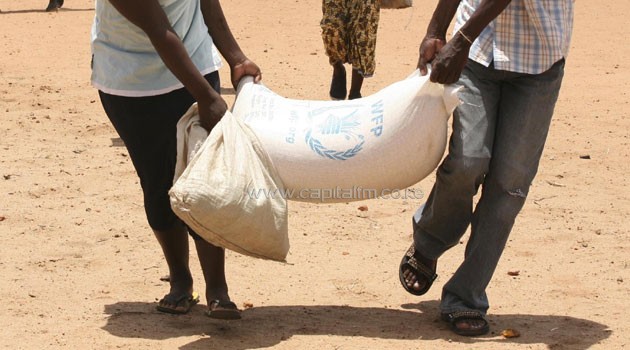
The ration cut of 50 percent, starting Saturday, comes as WFP struggles to raise US$38 million to cover its refugee operation for the next six months/XINHUA-File
NAIROBI, Kenya, Nov 11 – Around half a million refugees, mainly from Somalia and South Sudan, living in the Dadaab and Kakuma camps in remote areas in northern Kenya, will receive reduced rations from the United Nations World Food Programme (WFP) as a result of insufficient funding.
The ration cut of 50 percent, starting Saturday, comes as WFP struggles to raise US$38 million to cover its refugee operation for the next six months. This includes US$15.5 million urgently required to address food needs through January 2015.
“WFP has done everything it can to avoid reducing rations, using all means at our disposal to cover critical funding gaps,” said Paul Turnbull, WFP Deputy Country Director for Kenya.
“Cutting rations is the last resort and we’re doing it to eke out the limited food we currently have available over the next ten weeks, as we continue to appeal to the international community to assist.”
Each month, WFP distributes 9,700 metric tons of food for some 500,000 refugees in Kenya, at a cost of almost US$10 million. The refugees are provided with a food ration of cereals, pulses, vegetable oil, a nutrient-rich maize-soya blend and salt, providing 2,100 kilocalories per person per day, the recommended emergency ration.
From mid-November, the refugees will receive a food ration equivalent to 1,050 kilocalories per day.
“WFP depends entirely on voluntary contributions from donors who generously support food assistance for refugees,” said Valerie Guarnieri, WFP’s Regional Director for East and Central Africa. “With competing humanitarian needs around the world, we realize budgets are tight but nonetheless, we must call for more funding so that we can work with the office of the UN High Commissioner for Refugees to meet the urgent needs of these vulnerable people, who have no other means of support.”
WFP expects to distribute half-rations until the end of January 2015, when a shipment of food assistance donated by the United States of America, sufficient for six weeks’ food requirements, is expected to arrive.
Immediate, additional contributions would allow WFP to purchase food that is available in the region, which would reduce the impact of these dramatic cuts on the vulnerable refugee population. In 2014, international donors have contributed US$68.8 million to support food assistance for refugees in Kenya.
WFP also provides specialised fortified foods to young children, as well as to pregnant women and nursing mothers, to stave off malnutrition. In addition, primary and pre-primary schoolchildren receive porridge, which helps them concentrate on their classes and acts as an incentive to their families to send them to school.
So far, these activities are not expected to be affected by the cuts.









































